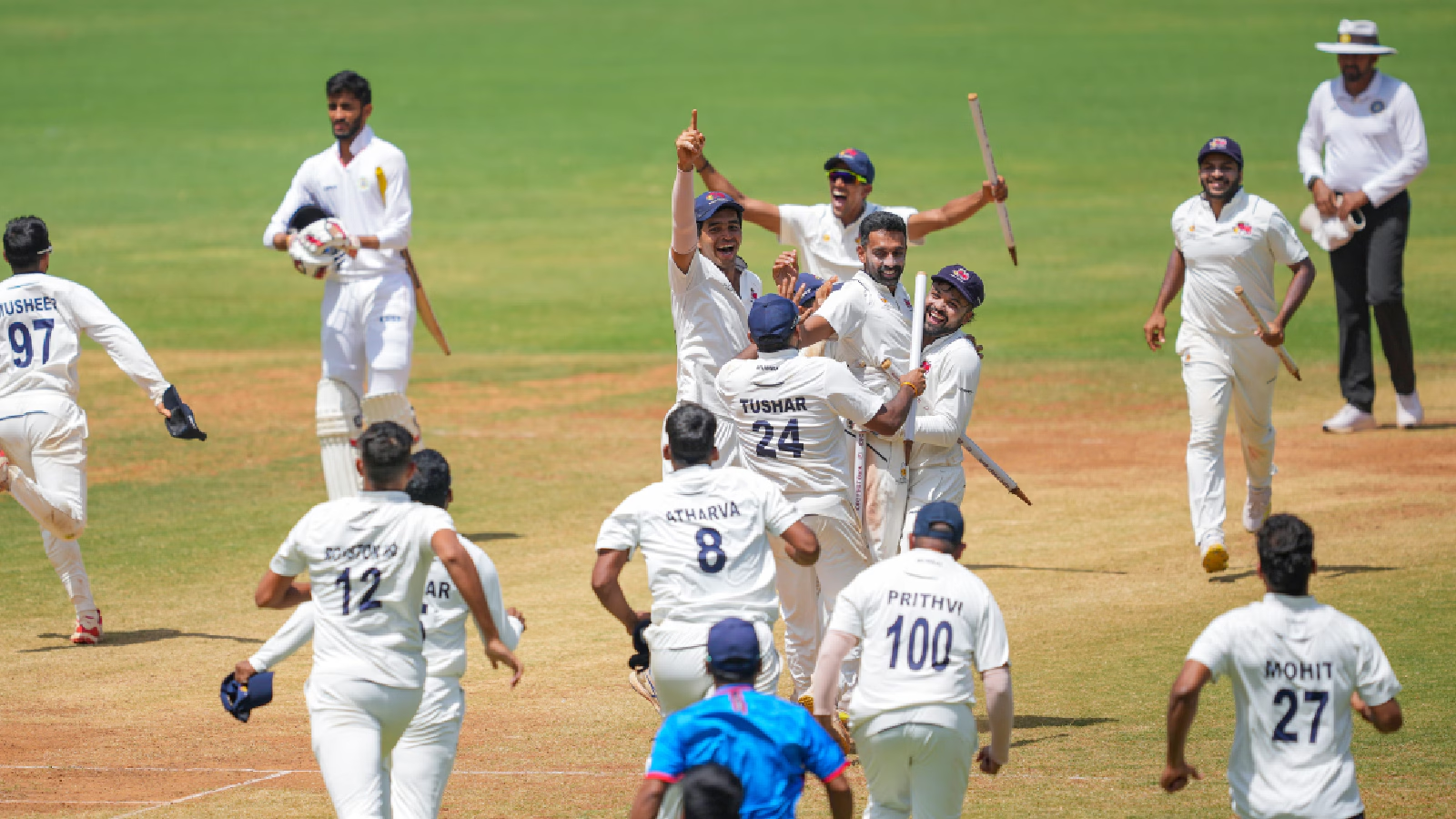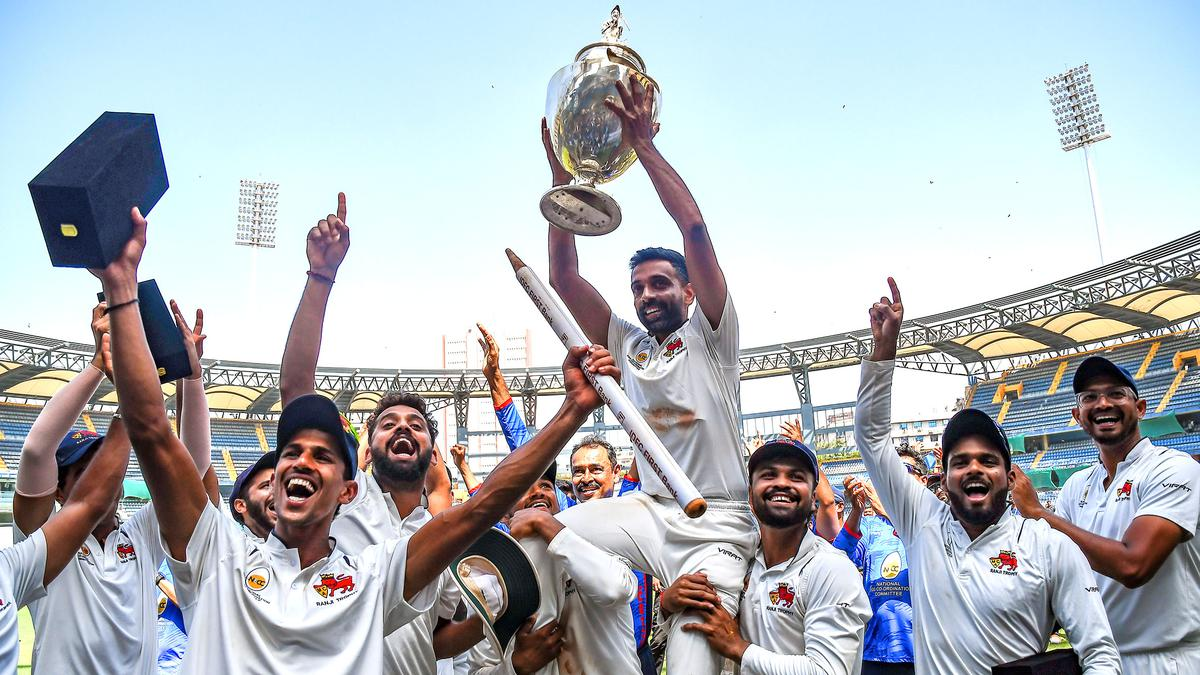The Economics Behind Ranji Match Fees: India’s Domestic Cricket Lifeline
The Ranji Trophy is hard. It’s miles away from glamour, nowhere near the hype. Four days on unpredictable wickets, heavy legs, and little crowd noise — that’s the reality. It’s where real cricketers are built. Not on YouTube clips, not in front of fireworks. On grit. On discipline. On getting through the grind.
Look, the IPL gets the headlines. India caps get the respect. But what about the lads who are in Himachal in January, freezing, chasing a draw to stay in Elite Group B? They’re the ones doing the heavy lifting. They don’t have sponsors. They’ve got one shot — and that’s Ranji.
And for years, the pay didn’t back the effort. You had fellas playing their guts out and getting paid less than a half-decent office job. It was wrong. No other word for it. You can’t ask someone to treat cricket like a full-time profession and then toss them scraps for their trouble.
This piece is about those players — the ones who might never hit a six in the IPL but still turn up day after day. We’ll break down what Ranji match fees look like today, how they’ve changed, and where they need to go. Because if you’re serious about cricket in India, then you’d better start talking about the Ranji per match fees — not just stadium noise and sponsorship deals. The real game starts far away from the spotlight, in places where dedication matters more than glitz — unlike online casino slots, where it’s all about quick thrills and instant wins.

Evolution of Ranji Match Fees: From Tokens to Livelihoods
Go back to the ’90s — playing in the Ranji Trophy was mostly for pride. Players earned peanuts. A few hundred rupees per day, at best. Enough to cover bus fare and tea, not much more. Forget match bonuses. There were no contracts. No safety nets.
Even into the early 2000s, the idea of cricket as a reliable job outside the national team was shaky. The Ranji Trophy match fees didn’t reflect the physical toll, the travel, or the grinding nature of the tournament.
But things changed when the BCCI became a commercial machine. After the 2007–08 IPL boom, with broadcast rights selling for billions, domestic players finally started seeing crumbs — and eventually, real cuts — of the pie. Reforms in 2010 bumped daily fees. In 2021, a landmark move brought a tiered payment system. No more one-size-fits-all. Experience started paying.
Today, Ranji regulars can make a decent living. Not just survive, but actually plan ahead. Buy a house. Fund a career. And while it’s still not close to IPL money, the gap has narrowed — and that’s vital for the sport’s health.
“Without strong domestic pay, you can’t expect strong national performance. Ranji is the spine of Indian cricket.” – Rahul Dravid
He’s not wrong. If you underpay your foundation, the whole building shakes.
Current Ranji Trophy Match Fee Structure (2025 Update)
The 2021-22 season flipped the script. For the first time, Ranji per match fees were linked to a player’s experience. The logic was simple — reward loyalty, skill, and consistency. Here’s how it looks now in 2025:
Current Ranji Match Fees (2025 Edition)
| Experience Level | Match Fee (INR) per Day | Fee per 4-Day Match | Notes |
| Above 40 First-Class | ₹60,000 | ₹240,000 | Veteran slab |
| Between 21–40 Matches | ₹50,000 | ₹200,000 | Mid-level professionals |
| Below 20 Matches | ₹40,000 | ₹160,000 | Entry-level domestic players |
This system has leveled the field. Newbies still earn fair pay, while old hands — those who’ve put in years of graft — finally see recognition in numbers. And with over 9 games in a Ranji season, veterans could earn over ₹20 lakh annually just in match fees, not counting extras. That’s real money. Not superstardom. But stability.

How Ranji Players Earn: Beyond the Per Match Fees
Ranji match fees are the core, but they’re not the whole pie. Many state boards throw in sweeteners — performance bonuses, daily allowances, and in some cases, retainer contracts for star players. Plus, if your team makes the knockouts, you get more matches — and more earnings.
Then there’s the knock-on effect: exposure. A good Ranji season boosts your stock for IPL scouts. Even if you’re unsold, a strong domestic record bumps your base price in future auctions.
Here’s how Ranji players make money outside of basic match fees:
Other Income Sources for Ranji Players
- Match-winning bonuses from state associations
- Daily travel and lodging allowances during the season
- Retainer contracts for top performers at the state level
- Higher IPL base price through consistent Ranji performances
Even sponsorships and local brand tie-ups occasionally come through, especially for players from big teams like Mumbai, Delhi, or Karnataka.
So while Ranji Trophy match fees are the foundation, they often unlock bigger doors for those who can slog through the mud and shine.
Comparison with Other Domestic Leagues
Is India generous to its domestic warriors? Depends who you ask.
Compared to the past, absolutely. Compared to global standards — a mixed bag.
Australia and England pay more, but their systems are leaner. Fewer teams, fewer players. India’s domestic pool is massive. That stretches the purse. Still, the current Ranji per match fees hold their own.
Ranji vs. Global Match Fees (per 4-day match)
- Ranji Trophy (India): ₹1.6–2.4 Lakhs
- County Cricket (UK): ₹3–4 Lakhs equivalent
- Sheffield Shield (AUS): ₹3.5–5 Lakhs equivalent
- Quaid-e-Azam Trophy (PAK): ₹1.2–1.5 Lakhs
Now, players in England or Australia may earn more per game, but they also face higher living costs. Plus, India’s Ranji system now gives a broader base a livable income — a big shift from a decade ago.
Still, there’s room to grow. Especially in consistency. Some state boards delay payments. Infrastructure in certain zones still lags. But at least financially, the system’s no longer broken.

Challenges and Controversies in Ranji Payments
Here’s the thing — it’s not all rosy. The Ranji match fees sound solid on paper, but in reality, there’s a patchy underbelly few want to talk about.
First off, payment delays. While the BCCI sets the standard and sends money down the chain, state associations handle distribution. That’s where things jam. Some boards move fast. Others drag their feet for months. For players, that gap means unpaid rent, stalled treatments, or families waiting on basics. It’s not just an inconvenience — it’s survival for some.
Then there’s the regional gap. States like Mumbai, Karnataka, or Delhi run like slick machines. Bigger sponsorships, better facilities, faster payments. But in places like Nagaland or Manipur, infrastructure is thin, exposure is low, and sometimes even basic kits are substandard. Same tournament, different universe.
Add to that the silence. Many players don’t speak up. They fear being blacklisted, dropped, or labeled troublemakers. And when they do talk, it’s usually after retirement. That says plenty.
Cricket boards have their own excuses: paperwork delays, audit bottlenecks, fund clearance. But none of that helps the guy waiting for his Ranji per match fees six months after playing his heart out.
Bottom line? Until the flow of money is as consistent as the promises made, there’s still a fight left in this system.

The Future of Ranji Match Fees: BCCI’s Road Ahead
The good news? There’s movement. The Lodha Committee cracked open the BCCI a few years back and shook some old habits. One key point: look after domestic players better. Pay them on time. Give them protection. Offer pensions. That idea’s slowly picking up steam.
The explosion of digital rights has added fuel. Viacom18 and Star aren’t just splashing cash for India games — domestic broadcasts are getting a piece too. That brings visibility. And with visibility comes money.
But here’s the kicker — that revenue needs to trickle down. If BCCI earns hundreds of crores through streaming, domestic pros grinding in Valsad or Cuttack deserve more than scraps. Raising Ranji Trophy match fees across the board is one step. But the game needs insurance plans, post-retirement security, and mental health support too.
What Needs to Happen Next:
- Standardize payment timelines across all state boards
- Introduce pension plans for players with over 50 first-class matches
- Mandate annual insurance coverage for all domestic cricketers
- Digital bonuses — revenue-sharing models tied to viewership
The groundwork has been laid. Now it needs accountability — not committees, but delivery.
Investing in the Grassroots
Every time you hear a debutant tear up talking about their Ranji days, you realise what this tournament means. It’s where India’s cricket identity is shaped — far from glamour, built on grit.
Fair Ranji match fees don’t just keep the lights on — they keep the pipeline flowing. They ensure the next Bumrah, Pujara, or Jadeja doesn’t drop out because cricket couldn’t pay the bills.
Not everyone makes it to the top. But all of them hold up the structure. That’s why Ranji per match fees must keep rising — not as charity, but as deserved pay for skilled professionals holding India’s cricketing future together.
As the sport modernises, domestic cricketers should never feel like second-class citizens. Because if they crumble, the whole house collapses.
Frequently Asked Questions
1. What is the current Ranji match fee per player?
Players currently earn between ₹160,000 to ₹240,000 per match depending on experience. Veterans (40+ matches) receive the highest pay.
2. Are Ranji players paid for training or only matches?
Only official matches count for base payments. However, players do receive allowances for travel, accommodation, and camp participation.
3. Do all Ranji teams offer equal pay?
Match fees are fixed by the BCCI, so the core amount remains the same. That said, wealthier state associations may add extra bonuses or better facilities.
4. Can Ranji players live off their earnings?
Top-level domestic players can earn ₹20–25 lakh a year from matches alone. Others often add coaching gigs, IPL stints, or government jobs to keep steady income.









